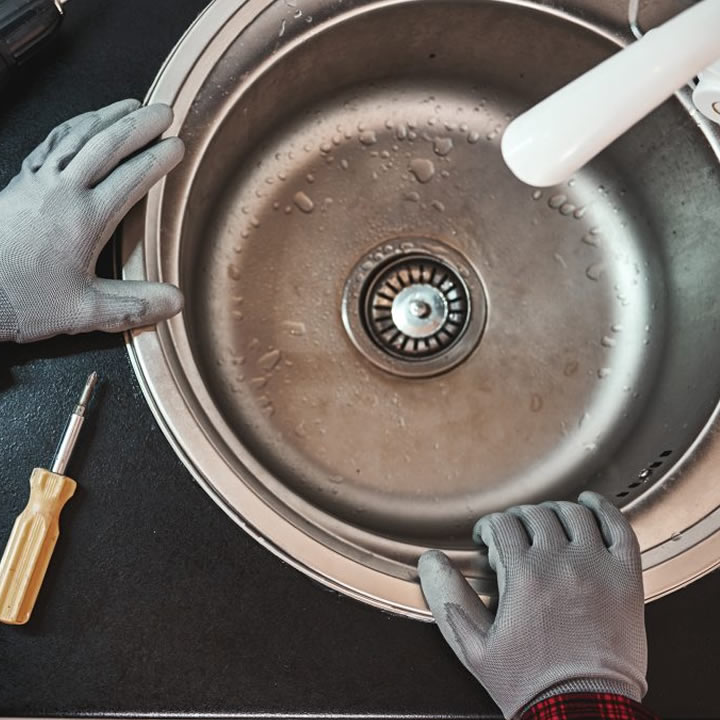Every kitchen features a centerpiece that is simultaneously functional and often undervalued – the kitchen sink. A well-installed kitchen sink goes beyond aesthetic appeal, contributing significantly to the overall efficiency and functionality of your culinary space.
The journey of kitchen sink installation opens a critical juncture for homeowners, calling for a significant decision – should they employ the expertise of professionals and incur the cost to install kitchen sink, or should they embrace the adventure of a Do-It-Yourself (DIY) project?
The professional cost to install a kitchen sink typically ranges from $200 to $500 depending on various factors.
This article dives deep into both possibilities, aiding homeowners in making a well-informed choice, considering factors such as cost, time, skill level, and personal inclination.
With the potential cost to install a kitchen sink in mind when hiring professionals, it becomes even more crucial to weigh the pros and cons carefully before proceeding with either option.
Unraveling the Pros of Professional Assistance: The Call for Expertise
A. Expertise and Experience: The Plumbing Maestros
Professional plumbers, equipped with years of training and hands-on experience, are akin to virtuosos in their field. They possess a reservoir of specialized knowledge that aids them in tackling a plethora of plumbing issues, including the precise task of kitchen sink installation.
Their ability to handle even the most daunting installations with accuracy and speed ensures that your kitchen sink serves you well for a long time.
B. Peace of Mind: A Worthy Investment
Engaging professionals for your kitchen sink installation extends beyond the realms of a simple monetary transaction. It is an investment in peace of mind, a valuable asset for homeowners.
Professional plumbers, with their seasoned acumen, can anticipate potential problems and circumnavigate them, effectively mitigating risks. Their work often comes with a warranty, a safety net for homeowners should any post-installation problems occur.
Treading the DIY Path: Opportunity or Overreach?
Feasibility Assessment: DIY Readiness
Before venturing into the DIY territory, a fair evaluation of one’s comfort and skill level with plumbing tasks is vital.
The type of sink and the intricacies of the installation method chosen can add layers of complexity that demand a robust understanding of plumbing and technical know-how.
Therefore, an initial self-assessment can go a long way in determining the success of a DIY project.
Cost Savings Potential: Calculating the Real Savings
One of the key drivers behind the DIY choice is the potential for cost savings.
By sidestepping professional labor costs, homeowners can achieve substantial financial savings. However, it’s critical to factor in the hidden costs associated with DIY projects – the cost of tools and equipment, potential repairs, and not to forget, the value of your own time.
Plus, any installation errors can lead to costly issues in the future, perhaps outstripping the initial cost of hiring a professional.
Striking the Balance: Multifaceted Considerations
Complexity and Time Commitment: The Investment Quotient
The complexity of the installation directly impacts the time required to accomplish it.
A complex sink installation can turn into an exhaustive project. The decision to opt for DIY should therefore consider the time commitment required, weighed against personal availability and project timeline expectations.
Tools and Resources: Beyond the Price Tag
An essential part of the DIY decision involves evaluating the availability and cost of the necessary tools and equipment.
While you may have some of the necessary tools, others might require purchase or rental, adding to the project’s overall cost. Moreover, the availability of reliable instructional resources, such as online tutorials and guides, is a crucial component of the DIY journey.
Risk Management: Preparing for the Unforeseen
A successful DIY project requires the ability to foresee potential challenges and have a plan to troubleshoot unforeseen issues. Small installation errors can rapidly escalate into extensive problems, leading to additional costs and impacting the project’s overall success.
Building Skills and Knowledge: The Unseen Benefit
Beyond cost savings, DIY projects offer the opportunity for personal growth and skill development.
The DIY path can be an enriching journey of learning and self-improvement. However, the learning curve, time, and effort necessary for skill-building need to be weighed against the project’s immediate needs and desired timeline.
Weighing Your Options
The decision between professional assistance and a DIY approach for kitchen sink installation is complex and multifaceted. It requires a careful balancing act considering several factors – cost, time, skill level, risk tolerance, and even personal satisfaction.
This article strives to provide a comprehensive overview of these factors, enabling homeowners to make an informed, balanced decision that suits their unique circumstances, ensuring a successful and rewarding kitchen sink installation experience.

